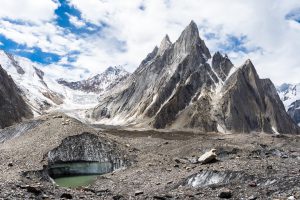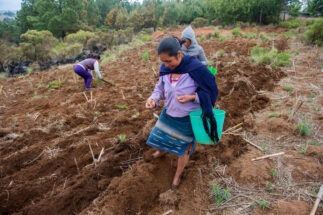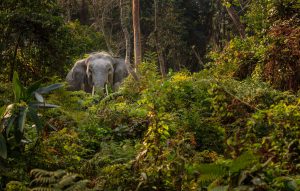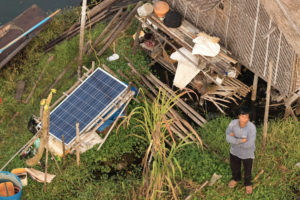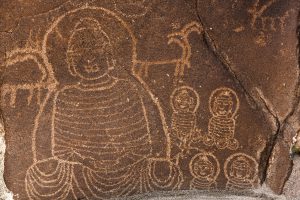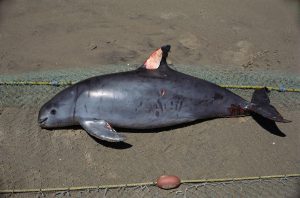One of the countries hit hardest by the stoppage of tourism due to the pandemic is Kyrgyzstan, just as it was pushing to open up and strengthen its tourism sector. In January 2020, Maksat Damir Uulu, the deputy minister of culture, information and tourism, was in India, promoting the country as a tourist destination. During an interaction organised by the Federation of Indian Chambers of Commerce and Industry, he said, “We had 4.5 million visitors in Kyrgyzstan in 2017, it became 7 million in 2018 and 8.5 million in 2019.”
This is a remarkable growth in a country whose population is only 6.5 million, and which has a legacy of weak infrastructure. From 2010 to 2016 the sector had largely declined, with its share of the country’s GDP falling from 6% to 3.9%. By 2019 these figures had changed dramatically. According to the World Travel & Tourism Council, last year tourism accounted for 8.3% of total economic activity and 209,100 jobs (8.5% of total employment).
A significant part of the growth is linked to community-based tourism (CBT), a sector that has been strongly supported by the Swiss government. A 2017 paper published by the University of Central Asia noted, “CBT groups rely on sustainable practices and thereby contribute to the conservation of natural and cultural heritage. They provide tourists with local food, grown using sustainable agricultural practices, authentic accommodation (e.g. yurts), traditional music, art, crafts and cultural practices. Furthermore, most CBT groups are located in remote mountainous areas. Ecotourism thus contributes to poverty alleviation and inclusive growth in the country by creating and diversifying sources of income for most vulnerable population groups.”

One of the experts with a close insight into both ecotourism and community-based tourism in Kyrgyzstan is Marc Foggin. A conservation biologist with a speciality in the mountain environments of western China and Central Asia, Foggin’s research over the past few decades has mainly been on resource management, protected areas and co-management, nomadic pastoralism and horizontal policy analysis. He presently serves on the advisory committee of the Global Challenges Research Fund’s ‘Gobi Frameworks’ project on sustainable infrastructure development (led by the University of Oxford); as a member or coordinator of several research consortia focused on the environmental and social impacts of China’s Belt and Road Initiative; as honorary member and as auditor of the accounts of the Indigenous and Community Conserved Areas Consortium, with a special focus on Central Asia; and as international director of the NGO Plateau Perspectives.
He spoke to The Third Pole. Here are edited excerpts from the conversation:
Ryskeldi Satke (RS): How does ecotourism help local communities in Kyrgyzstan?
Marc Foggin (MF): Let us remember that ecotourism is a subset of nature tourism, but not the same as nature tourism. Nature tourism takes nature as an asset; but, by definition, ecotourism has at least three main component parts – (i) ecotourism is not only situated in natural environments, it should also actively contribute to environmental conservation goals; (ii) it must bring benefit to local communities; and (iii) it should promote education and help raise environmental awareness, not only for local community members or for tour participants, but for all parties involved. And again, in regard to communities, if no benefit is arising for local communities, then it is not ecotourism.
There are several ways ecotourism benefits local communities; not all of these are based on mainly economic perspectives – since health, wealth and wellbeing are so much more diverse and enormously richer than just economics! In no particular order these include: pride in local environment; pride in culture; participation and engagement in tourism (not just being ‘assets’ for external companies or operators); financial returns, whether through owning/operating a business or through employment with such business, or through sale of services (e.g. as nature guide, horse rental, food, home stay etc); involvement in various conservation activities (both environmental and cultural); opportunity to share knowledge and experiences; opportunity to gain knowledge and exposure to others’ knowledge and perspectives; overall health, both physical and mental (including sense of identity, overall wellbeing); and much, much more.
![Community leader riding his horse in an alpine valley in the Tian Shan mountains. This valley is now situated in the recently established and community-operated Babson Micro Reserve in Ton District [image courtesy: Marc Foggin]](https://dialogue.earth/content/uploads/2020/07/Rider-and-dog-MF.jpg)
MF: The country clearly promotes the development of tourism, at least in a general sense. There also has been support for community-based tourism for many years, both directly within the country and through international partnerships. The country and the general public also recognise nature and culture as major assets in Kyrgyzstan – however, it is not yet broadly recognised that ecotourism is different, and indeed much more, than so-called nature tourism.
It also is different from CBT. When ecotourism engages with communities, in its ideal form it both encompasses and moves beyond the CBT model of operating with/through local communities and bringing benefit to local households. In essence, ecotourism starts with a CBT orientation and then moves into broader and more diverse partnerships, aiming to work together toward common goals.
In particular, ecotourism also must advance, in some form or other, real-world conservation action (and not just “do no harm”).
It should have some educational element, including raising awareness and/or local capacity building that connects with appreciation for the environment. This can build well on local expertise such as traditional knowledge and culture, too. However, these connections are not well understood in Kyrgyzstan, at least not yet; but all of the important pieces are in place – the stage is very well set, and there is much potential for the country to become a world-class leader in ecotourism. And if properly understood and promoted, genuine ecotourism could really become a mainstay in the country – just not if it is attempted to be scaled-up in ways that are disconnected from local communities, or from local associations or ventures, into some form of abstract and large-numbers regional tourism plan… because that would outright change the nature of the operations – it would simply morph the tourism into something unsustainable and relocate benefits away from the people.
![Nomad family milking mares in high summer pastures near Eki Naryn in Naryn oblast, Kyrgyzstan [image courtesy: Marc Foggin]](https://dialogue.earth/content/uploads/2020/07/MF-Kyrgyz-horses.jpg)
MF: Where Kyrgyzstan is exceptionally well-placed, is that it not only has all of the key ingredients in terms of nature and culture as ‘assets’, it also has a very vibrant civil society. There are many community-driven social enterprises, on the one hand, and innovative environmental conservation initiatives, on the other hand. Link these together with nature-based tourism and CBT, and voilà, we have ecotourism!
This approach is what we have been supporting in Chon-Kemin with Shumkor Association and also in Ton district with the Baibosun Community-managed Micro Reserve. It is not we who initiated these ventures, it is first and foremost the local communities themselves, supported by both the Ilbirs and Camp Alatoo foundations. But what we have been able to bring to the table and encourage is a tying together of their conservation initiatives and their tourism potential.
Additionally, this approach will meet national interests in wildlife conservation, as well as bringing locally beneficial community development opportunities through tourism and other related businesses. So, several sectors in the country should be supportive, and in fact are supportive. But it is the synergies that make all this so special, and in fact (in the case of Kyrgyzstan) such an excellent opportunity. The right people and projects/initiatives (including civil society as a whole) are all in place, together with beautiful nature and wildlife and also the cultural landscapes and ways of living. It is a very attractive place for people from around the world.
I would add too, however, that “ecotourism” does not necessitate that people live in this-or-that style or way of life. It does not require that people live a lifestyle that some people, e.g. from Bishkek, might deem as being from the past. All that is required is that communities are in the lead and gain benefit from the operations; that conservation outcomes are derived from the operations; and that there are various forms and directions of learning. Within the community, lives can be as (so-called) modern or traditional as one likes; the focus is on the people, not on viewing people as being in a museum. People and communities are dynamic.
Ecotourism is not meant to tie people down to some past state of affairs, to show off to outsiders. Rather, ecotourism should and in fact must be but a tool to move toward desired futures, including the future in terms of ‘development’ with services, economics, and opportunities that are desired, yet also in ways that are positively supportive of good environmental stewardship. The main necessity for this is that local communities are in the lead role (even if supported or facilitated by others, working in partnership with others), rather than an outside/external company, whether in Bishkek or New York. These almost certainly will always fall into the trap of mainly just ‘using’ communities, either for labour or products or for showcasing them, with the profits going to city-based companies. In short, ecotourism is for people, locally, and advances both conservation and sustainable community development.
![<p>Local culture and nature are deeply intertwined for a hunter and his eagle near the shore of Lake Issyk Kul. Building on cultural traditions, they are now also engaged in family-based ecotourism operations [image courtesy: Marc Foggin]</p>](https://dialogue.earth/content/uploads/2020/07/eagle-and-hunter.jpeg)
